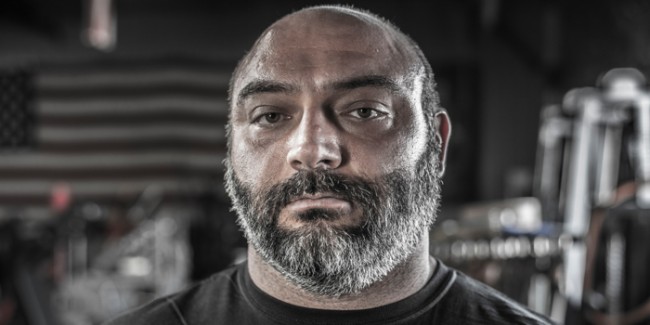
Most of us can agree that, in general, if we get an athlete stronger, they will get faster. When I say “in general,” we have to assume a couple of things because I know some of you are already starting your argument from the seat of the pretentious strength coach: "Well, actually, strength will only help a speed athlete to a certain degree..."
OK, then why did Ben Johnson get on the sauce? We’ll get to that later. For now, we will assume the athlete is on a balanced program, performing movements correctly, and continuing to train sprinting in one form or another. During my coaching career, I consistently witnessed improvements in speed when we got kids stronger, especially early on in their development.
The question is, at what point is the athlete strong enough for continued speed improvements? Take a scroll through your Twitter feed during weight room testing season, and you’ll eventually see some 1RM testing. If you dig a little deeper in the comments, you will undoubtedly come across a comment about how that strength coach needs to take into consideration training factors other than strength or something to the tune of “Sure, his squat went up, but is he faster?”
As much as I am a social media advocate, and it can be fun to talk a little shit now and then, this is one of the biggest problems with this outlet. It’s really hard to get an accurate read on a situation or judge a full training plan on one 30-second clip. This happens all the time! I’ve been guilty of that myself. Take, for example, this clip of Louie Simmons talking about wide stance squatting being superior to narrow stance squatting.
A coach could watch this and start thinking they need to wide stance squat ALL the time or swear off Louie and Westside as garbage because everyone knows you shouldn’t wide stance squat because that’s only for powerlifters, NOT athletes. Either one of these reactions is not the way to go; the answer is somewhere in the middle.
To circle back around, you can’t know everything that’s going on from a short video clip. So to sit on the speed guru throne and talk shit about someone’s training methods based on a 10-second testing video is probably not the best approach. Every situation is unique, and we don’t know all the factors.
This brings us back to the question: how strong is strong enough? I hope you weren’t looking for a solid quantifiable answer on this one because we don’t truly know. I’m going to echo EVERY research paper I read in graduate school here and say, we don’t really know; more research is needed.
As much as coaches will say an athlete is strong enough for their maximal speed achievement, they don’t really know. I think it’s probably more common that a coach couldn’t get an athlete’s squat max to continue to climb or got scared of the numbers and stopped pushing strength, then they actually found this magical strength number that allowed them to shift the athlete’s training to more speed priority.
It’s very common to hear coaches talking about the pursuit of strength being detrimental to sports performance. Sure, this can happen, BUT how many of these coaches have actually reached that threshold? I’m going to guess not very many. Also, was the pursuit of strength the detriment to the athlete or was it lack of pursuit of sport skill that actually hurt the athlete? More than likely, it was the latter. How many times have you heard an athlete say after a poor performance, “Man, I just felt too strong today”?
Please don’t take that last paragraph the wrong way. While I am an advocate of training your ass off, I am NOT an advocate of chasing weight room numbers. When I was coaching, the only reason we tested maxes is that the kids and the coaches wanted to see them. I couldn’t care less what your squat max is.
Getting in and training hard for the day is far more important than a five-pound PR on any movement variation. Athlete training is a looong cumulative process with far too many outside variables to get hung up on how much weight you did on the Close Stance Low Box Safety Squat Bar versus Chain six weeks ago. It’s the continual training of the strength trait that is most important. Strength is not simply measured with a 1RM squat test.
In Wendler’s podcast episode, he talked about just training the athletes, not testing maxes, and letting the athletes develop over time. If more coaches would take this approach, more athletes would benefit. I think the takeaway message here is to continue to train for strength, but keep your main focus on the ultimate goal: speed.
I once thought we had a couple of sprinters that were strong enough. These guys were both under 200 pounds and were starting to do some freaky stuff with the weights. Let me clarify: technically sound freaky stuff. If athletes start looking like crap on their heavy stuff, shut it down! If things look good and they are ready to push the envelope then you can let them have at it. The one kid sumo pulled 635 off of the first pin, and the other hit a 585 paused parallel box squat.
Sorry, I had to clarify because not all box squats are equal. I started hearing the voices of the experts in the back of my head: “At some point continued strength gains will not yield faster times,” blah, blah, blah. This led me to dial back their max effort work in exchange for more emphasis on their reactive abilities and they got slower.
Could I be using the exception to explain the rule? Possibly. My point is EVERY situation is going to be unique, and you truly don’t know how strong is strong enough. I think the answer lies in continuing to push for strength while training all required special strengths. Don’t let your pendulum swing too far in any direction.











Coach Flaherty has his own perspective on whats strong enough, interesting work.
Regards RMS
Thanks for the article.